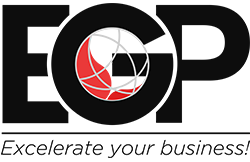This article first appeared on mytotalretail.com Bill Koefoed
 Credit: Getty Images by Busakorn Pongparnit
Credit: Getty Images by Busakorn Pongparnit
The Inflation Reduction Act (IRA) is coming and so too will changing consumer tastes as tax credits for investments in solar and wind power, electric vehicles, and energy-efficient appliances drive increased purchases in these areas. Auto companies, home improvement brands, and retailers with energy-efficient windows, A/C, furnaces, heat pumps, etc., need to start modeling and forecasting the impact of the IRA on demand for these products and factor this into supply chain planning. One way to do so is by leveraging a specialized software platform for scenario planning.
As an adjunct to existing enterprise resource planning (ERP) and supply chain systems, scenario planning solutions allow retailers, manufacturers and others to leverage historic sales data, correlate it with other internal and external data, and create machine learning (ML) models for various products, locations and channels.
Those ML models can generate demand forecasts for sustainable and energy-efficient products that help companies act quickly by optimizing staffing and purchasing of supplies and other components.
What is Scenario Planning?
Most people engage in scenario planning, and they don’t even know it. Bringing a jacket to dinner because it might get chilly outside or keeping jumper cables in the trunk in the event of a dead car battery are a couple examples. Essentially, scenario planning is the process of thinking through and preparing for various possible scenarios.
From a business perspective, scenario planning helps teams think through different variables that may affect the business, positively or negatively. This helps businesses identify warning signs that indicate potential disaster and allows the organization to be more agile to change.
Why is it Important to Retail?
Retail is all about having the right products at the right stores at the right time. Retailers have weathered many disruptions since the start of the pandemic and uncertainty has become common, so it’s increasingly critical that organizations recognize the signals of upcoming changes in demand and prepare accordingly. Scenario planning provides a process, framework and collaborative environment that enables organizations to proactively respond with agility in the face of uncertainty.
Here are some scenarios to plan for:
- Supply Chain Disruption: Anticipate changes in the availability of raw materials, labor shortages and shipping delays. You can avoid shipping fees, spot procurement rates or other costly issues by reacting sooner and having a mitigation plan.
- Demand Sensing: Avoid having too much product that won’t sell or not enough stock by detecting changes in customer habits and demand (e.g., from seasonality trends to competitor trends) that impact ordering and sourcing.
- Economic Factors: Identify and track economic metrics relevant to the business — such as interest rates, upcoming legislation, unemployment, and travel cancelations — to adapt accordingly.
Scenario Planning in Action
Here’s an example of how scenario planning can help a home improvement retailer optimize sales during the winter. By combining historic tracking of weather patterns with past sales of snow shovels and ice scrapers, the retailer can simulate what demand for winter items would look like in the case of normal vs. severe or mild winter conditions. Then as the forecast for a particular region is made, the retailer can execute the appropriate procurement plan.
A scenario planning process will help your business keep up with the various macroeconomic factors that impact consumer demand. There’s no doubt we’ll see an uptick in demand for energy-efficient and sustainable products as the IRA goes into effect. Therefore, it’s best to stay competitive and reliable when the rush hits by using scenario planning technology to ensure products are allocated to the right places and that there’s a sufficient workforce to facilitate production and delivery.
Bill Koefoed is the chief financial officer at OneStream Software, a leader in corporate performance management (CPM) solutions for the world’s leading enterprises.



